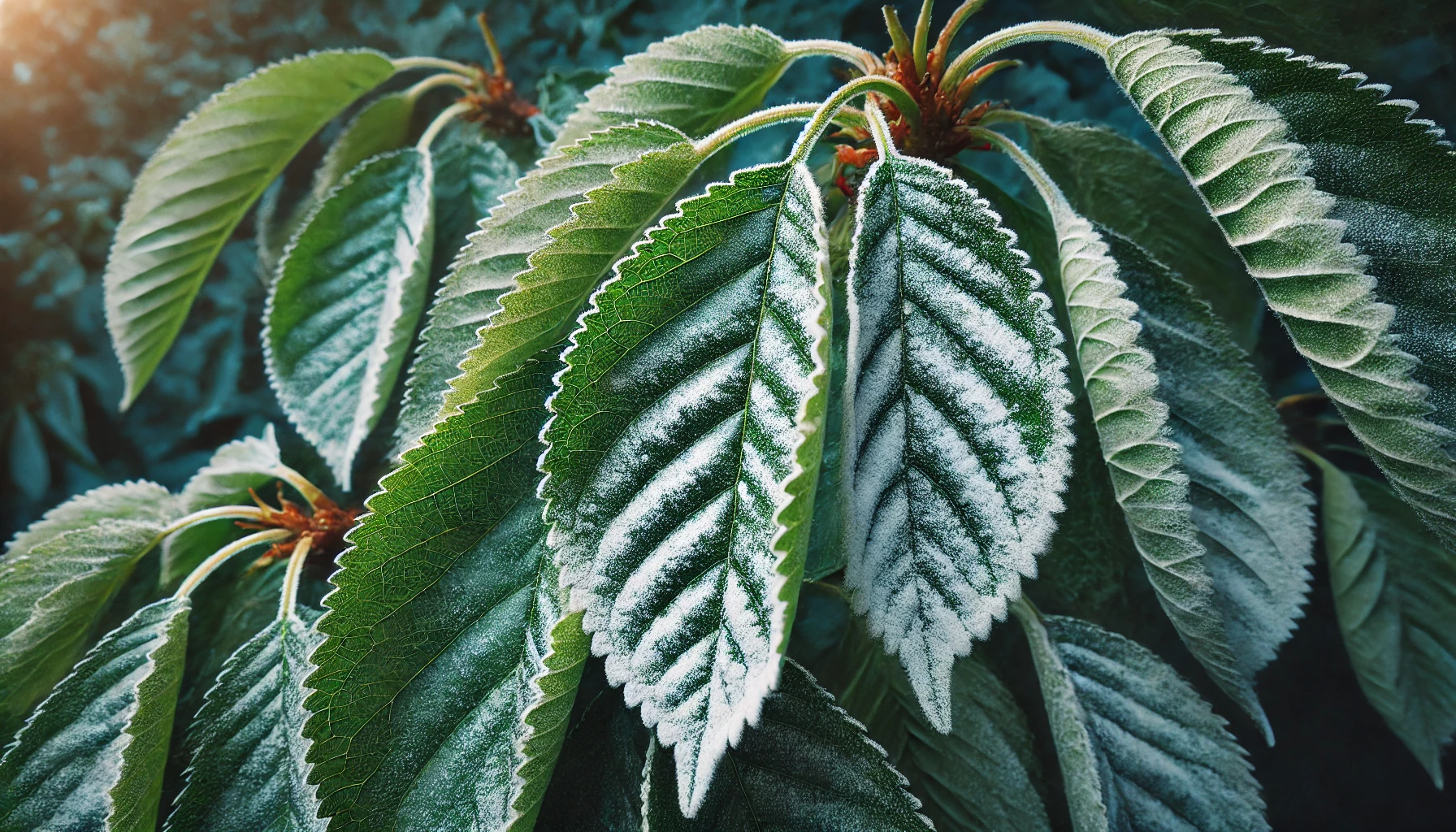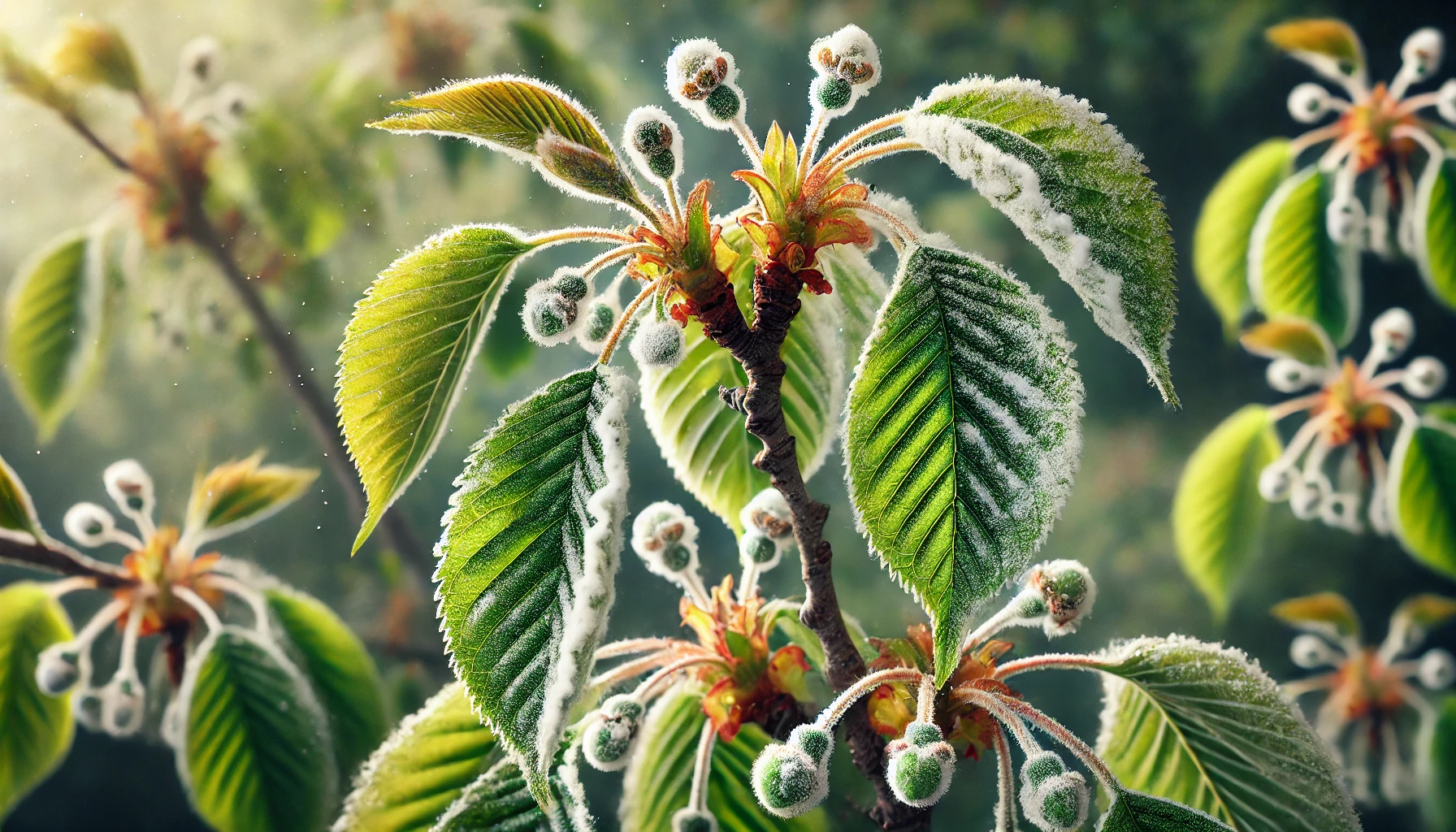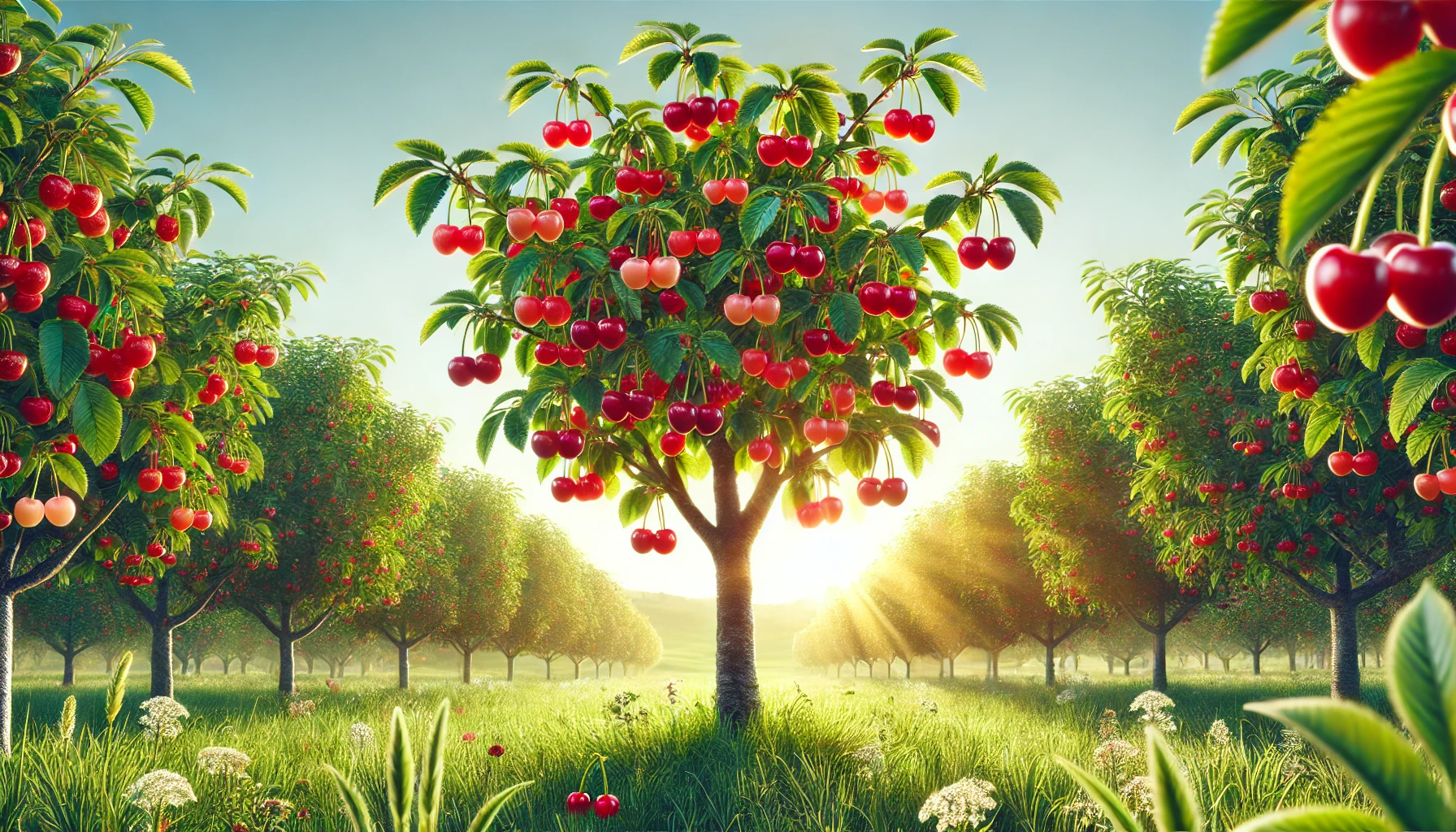
How to Identify and Treat Cherry Tree Powdery Mildew: Complete Guide for Gardeners
Few things are more disheartening to a gardener than watching a once-thriving cherry tree become coated in a white, powdery substance seemingly overnight. If you’ve spotted this telltale sign on your tree’s leaves, stems, or fruit, you’re likely dealing with a common fungal infection known as powdery mildew. In this complete guide, we’ll walk you through how to identify and treat cherry tree powdery mildew, so you can restore your tree’s health and prevent future outbreaks. Whether you’re a seasoned orchardist or a backyard hobbyist, this article provides everything you need to tackle the problem head-on and protect your cherry harvest.
Table of Contents
ToggleWhat Is Powdery Mildew? 
Powdery mildew is a common fungal disease that affects many types of plants. It appears as a white or gray powdery coating on leaves, stems, buds, and sometimes flowers.

This disease is caused by a group of fungi, the most common being Erysiphe, Podosphaera, and Oidium. Each type targets specific plants, but the symptoms look very similar.

- White, dusty patches on leaves and stems
- Yellowing or distorted leaves
- Stunted growth or weak flowering
- In severe cases, leaves may dry out and fall off


If left untreated, powdery mildew can weaken plants and reduce yield or blooms. The good news? It’s manageable with the right care and prevention strategies.
How to Identify Cherry Tree Powdery Mildew 

Spotting powdery mildew early can save your cherry tree from serious damage. Here’s how to identify it quickly and accurately:
1. Look for White or Gray Powdery Spots 
The first and most obvious sign is a white or gray powder on the surface of leaves, especially the younger ones. It may look like flour has been dusted over them.

2. Check the Undersides of Leaves 
Powdery mildew often starts on the underside of leaves, so gently flip a few to inspect closely. Early detection here can prevent the spread.
3. Distorted or Curled Leaves 
As the disease progresses, you may notice leaves curling, twisting, or becoming stunted. This deformation is a key sign the fungus is taking hold.
4. Delayed Fruit Development 
Infected trees may show slow fruit growth, fewer blossoms, or fruits that drop early. Powdery mildew can reduce your harvest if not controlled.
5. White Coating on Buds and Shoots 
Young shoots and flower buds may also show the same powdery film, affecting the tree’s overall health and bloom potential.
6. Dry or Brittle Leaves 
Heavily infected leaves may turn brown, dry out, and eventually fall off. This leads to weakened growth and poor fruit quality.

What Causes Powdery Mildew on Cherry Trees? 
Powdery mildew on cherry trees is caused by a fungus called Podosphaera clandestina. 
1. Humidity & Poor Airflow 
Cherry trees planted too close together or in areas with little air movement are more likely to develop powdery mildew. Fungal spores love still, moist environments.

2. Warm Days, Cool Nights 

Powdery mildew tends to appear when daytime temps are mild to warm (60–80°F), and nights are cooler. This combo creates condensation on leaves — ideal for fungal growth.
3. Shaded Areas 
Lack of sunlight slows leaf drying, keeping surfaces damp longer. Shady trees are more vulnerable than those in full sun.
4. Overhead Watering 
Watering from above increases humidity around leaves, especially in the evening. Damp foliage overnight makes it easier for mildew to spread.
5. Weakened or Stressed Trees 
Trees under stress from drought, poor soil, or pest damage are less able to resist fungal infections. A healthy tree is your first defense!
6. Previous Infections 
Fungal spores can overwinter in bark, buds, and fallen leaves. If you had powdery mildew last season, it’s likely to return unless treated.

How to Treat Cherry Tree Powdery Mildew 
Powdery mildew on cherry trees looks like a white, dusty coating on leaves, buds, and shoots. Treating it early is key to saving your tree’s health and harvest. Here’s how to treat it effectively:
1. Prune Affected Areas 
Cut off and destroy infected leaves, shoots, or twigs. This stops the spread and improves airflow, which discourages mildew.
2. Use a Fungicide Spray 
Apply a fungicide labeled for powdery mildew—choose organic options like:
- Neem oil
- Potassium bicarbonate
- Sulfur-based sprays
Spray during early morning or evening when temperatures are cooler.
3. Try a Homemade Remedy 
Mix 1 tablespoon of baking soda + 1/2 teaspoon of liquid soap in 1 gallon of water.
Spray the mix weekly until the mildew disappears.
4. Improve Airflow 
Thin out branches to allow sunlight and air to reach all parts of the tree. Good airflow reduces moisture and mildew growth.
5. Water at the Base Only 
Avoid wetting the leaves. Water the soil directly to keep foliage dry and mildew-free.
6. Clean Up Debris 
Remove fallen leaves and infected debris from around the tree to stop reinfection.
7. Boost Tree Health 
Healthy trees fight disease better. Use compost, mulch, and balanced fertilizer to strengthen your cherry tree.
How to Prevent Powdery Mildew on Cherry Trees 
Powdery mildew is a common fungal disease that can weaken cherry trees and reduce fruit quality. But with a few smart steps, you can stop it before it starts. Here’s how to keep your cherry trees healthy and mildew-free 
1.  Ensure Good Air Circulation
Ensure Good Air Circulation
Plant cherry trees with enough space between them. Prune regularly to remove overcrowded or crossing branches. Good airflow helps leaves dry faster, making it harder for mildew to spread.
2.  Choose a Sunny Spot
Choose a Sunny Spot
Powdery mildew thrives in shade and moisture. Plant your cherry tree in a sunny location with at least 6–8 hours of direct sunlight daily.

3.  Water the Right Way
Water the Right Way
Always water at the base of the tree, not over the leaves. Morning watering is best—it gives the soil time to absorb moisture and the leaves time to dry.
4.  Prune and Remove Infected Leaves
Prune and Remove Infected Leaves
Cut away and dispose of infected leaves or shoots immediately. Never compost infected material—it can spread the fungus.
5.  Use Disease-Resistant Varieties
Use Disease-Resistant Varieties
When planting new trees, choose cherry varieties known to resist powdery mildew. It’s a simple way to avoid future problems.
6.  Apply Organic Fungicides (If Needed)
Apply Organic Fungicides (If Needed)
Spray neem oil, potassium bicarbonate, or sulfur-based products early in the season. These treatments are effective and safe for organic gardens.
7.  Keep the Area Clean
Keep the Area Clean
Rake fallen leaves and debris from under the tree. Fungus can survive in old leaves and reappear next season.
By following these practical steps, you’ll reduce the chances of powdery mildew attacking your cherry trees—and enjoy a healthier harvest 
When to Seek Professional Help 
Sometimes, plant problems go beyond basic care. If you’ve tried everything and your plant still looks weak, it might be time to call in the pros. Here are key signs to watch for:

If leaves keep turning yellow or falling off despite proper watering and lighting, a deeper issue like root rot or pest infestation may be to blame.

Seeing bugs, webbing, mold, or strange spots? A professional can correctly identify the problem and recommend safe, effective treatments.


If your plant has stopped growing even in the growing season, it could be root-bound, nutrient-deficient, or suffering from an environmental issue.

Some plants are tricky to repot due to their size, root structure, or fragility. An expert can help avoid damage and ensure a healthy transition.

If you suspect issues with your water quality or soil pH, a professional can run tests and guide you on correcting the balance.

Garden centers, local extension services, or certified horticulturists are great resources. It’s better to ask early than risk losing your plant.
Tip: Hiring help might cost a little, but it can save your plant and teach you valuable care skills for the future!
Final Tips 
Powdery mildew may be a common problem for cherry trees, but it’s far from unbeatable. By learning how to identify and treat cherry tree powdery mildew early, you can protect your trees from long-term damage and ensure a healthy, fruitful season. Whether you’re using natural remedies or selective fungicides, the key is consistency, observation, and timely action.

Remember to maintain good air circulation, prune regularly, and keep your garden clean—these simple practices go a long way in preventing fungal issues. With a little care and attention, your cherry tree can bounce back stronger, producing the beautiful blossoms and delicious fruit you love.
Stay connected to your garden, and it will reward you in return. Happy growing!
Can powdery mildew kill a cherry tree?
While powdery mildew doesn’t usually kill a cherry tree, it can weaken the plant, making it more susceptible to other diseases and pests. If left untreated, it can cause significant damage, affecting the overall health and growth of your tree.
Is the fruit safe to eat if the tree has powdery mildew?
Yes, the fruit is generally safe to eat even if the tree is affected by powdery mildew. However, you should always clean the fruit thoroughly before consuming it. The mildew itself typically affects the leaves and stems, not the fruit directly.
Can I prevent powdery mildew without using chemicals?
Yes, natural remedies like neem oil, baking soda solution, or even a simple milk-water spray can help prevent powdery mildew. Good garden practices, such as proper spacing, pruning, and watering at the base of the tree, can also reduce the risk of infection.
How often should I treat my cherry tree for powdery mildew?
Treat your cherry tree at the first signs of mildew and continue treating it throughout the growing season as needed. For chemical treatments, follow the manufacturer’s guidelines, but always aim to treat at the first signs of the disease to prevent it from spreading.
Can I reuse the soil if my cherry tree had powdery mildew?
Yes, powdery mildew doesn’t usually survive in the soil, but it’s a good idea to remove any fallen leaves or infected plant matter from the area to reduce the chances of re-infection next season.
Are there specific cherry tree varieties resistant to powdery mildew?
Some cherry tree varieties are more resistant to powdery mildew than others. Look for varieties that are bred for disease resistance or those that have better air circulation and leaf structure, making them less prone to mildew outbreaks.


